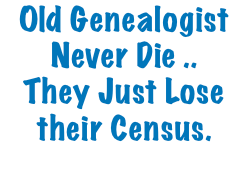 If the family I’m looking for is in the US, after 1790, I like to start by looking at a census record. The United States took a census every 10 years beginning in 1790. Privacy laws limit use for 72 years, therefore, the most current one available is from 1940. The easiest way to access a census is to go to familysearch.org or use your library card and look for digital records on your public library website, searching their sites for Heritage Quest. Both FamilySearch and Heritage Quest services are free.
If the family I’m looking for is in the US, after 1790, I like to start by looking at a census record. The United States took a census every 10 years beginning in 1790. Privacy laws limit use for 72 years, therefore, the most current one available is from 1940. The easiest way to access a census is to go to familysearch.org or use your library card and look for digital records on your public library website, searching their sites for Heritage Quest. Both FamilySearch and Heritage Quest services are free.
The concern of the census was numbers of people, ages and statistical information. Your family surnames maybe have been spelled however the census taker heard it, and ages may vary depending on the date the census was taken.
Once you are into the search system, enter the name of the person you are searching for and the place they may have been living, keeping in mind that they need to have been alive between 1790 and 1940. Remember to look at alternative spellings of the surname if you aren’t successful at first.
The wonderful thing about census research is that if you find your person, they are generally listed with their family, or whomever they were living with. In the censuses from 1850 to 1940, the head of household is listed followed by all the people living in the household. You can find out a lot, depending on what information they were collecting that year. Usually, it lists their name, and age, and sex, and may list the relationship of each person to the head of household. Also included may be where they were born, where their parents were born, marital status, if they owned their home, what their occupation was, the value of their property, if they could read and write, if they were a citizen, and if they attended school.
Some censuses collected additional unique data, for example, the 1900 census asked how many children a woman had and how many were living, and if they immigrated, what was their year of immigration. Questions like these can give you clues to further your research.
When you find your ancestor, check out a couple of pages before and after their name. People often lived near other family members and you may locate other relatives nearby. One family, I was searching for ended at the bottom of one page and continued on the next page. The family surname was indexed as Tinney on one page and Finney on the second page. I would have never found them if I had relied on an index alone, or had not looked at additional pages.
If you can’t find the ancestor you are looking for try searching for another member of the family who could have been living at home.
Don’t depend on the index alone. I found my father in the 1920 census and he is listed correctly with his family at age 2. In the 1930 census, he is listed with the family who was raising him as he had been orphaned a few years early. His age was indexed as 62 and his first name was spelled wrong. If I had only been looking for Ferron Bliss age 12, I would have missed him. Whoever indexed the census transcribed the first name wrong and also missed the age. Fortunately, the town had less than 300 people and it didn’t take me long to find him.
Study your census records carefully and try to glean as much information as you can from them. This means you will want to look at the original record, not just the transcription. Understand that what you are seeing is a copy of the original census, so there is a chance that errors in copying could have occurred. Also sometimes the information was not given by an adult in the home but may have been given by whoever was home, and that may have been a child, or if no one was home a neighbor may have been asked. Enjoy these records, they are easily accessible and free.
